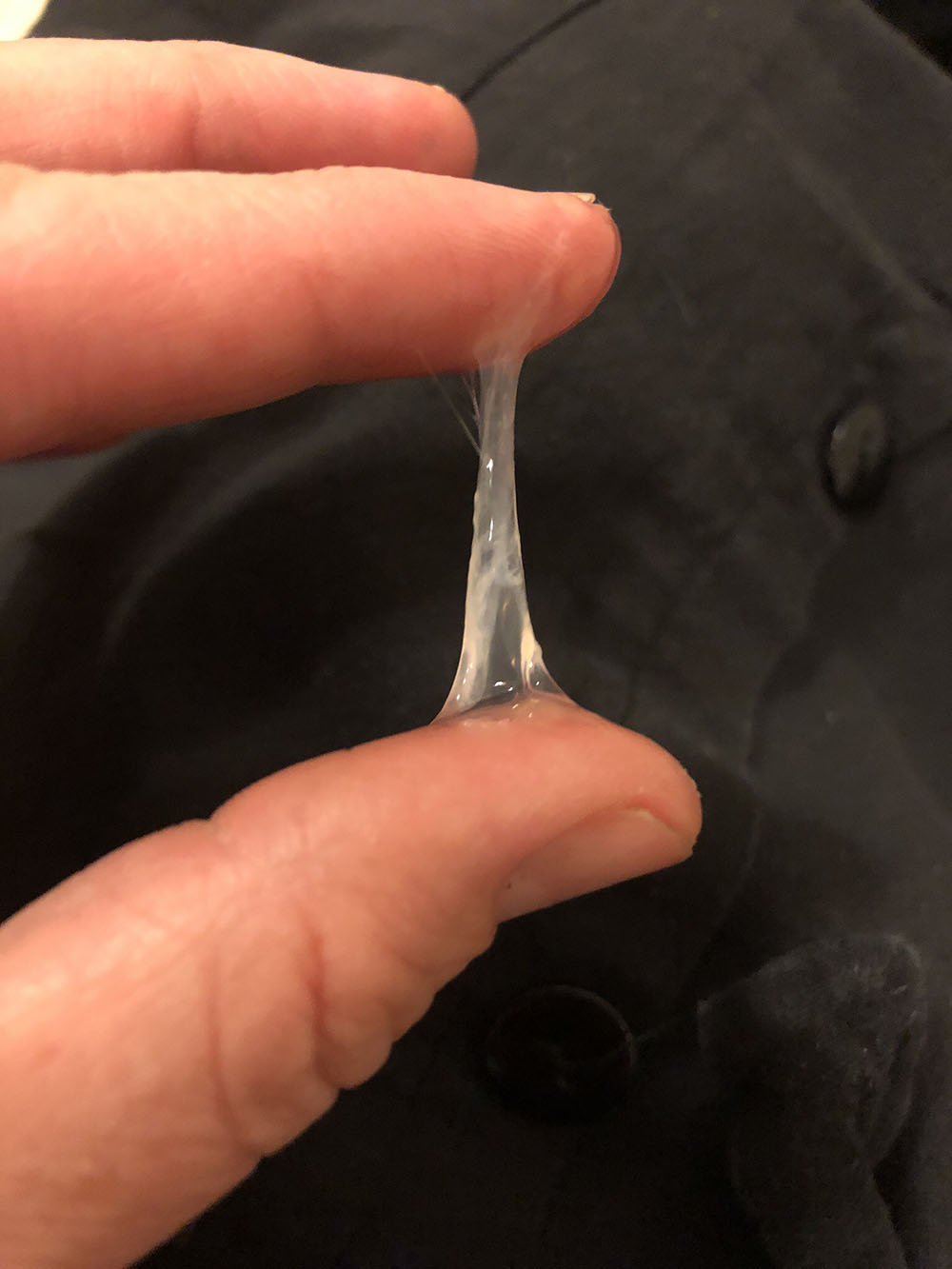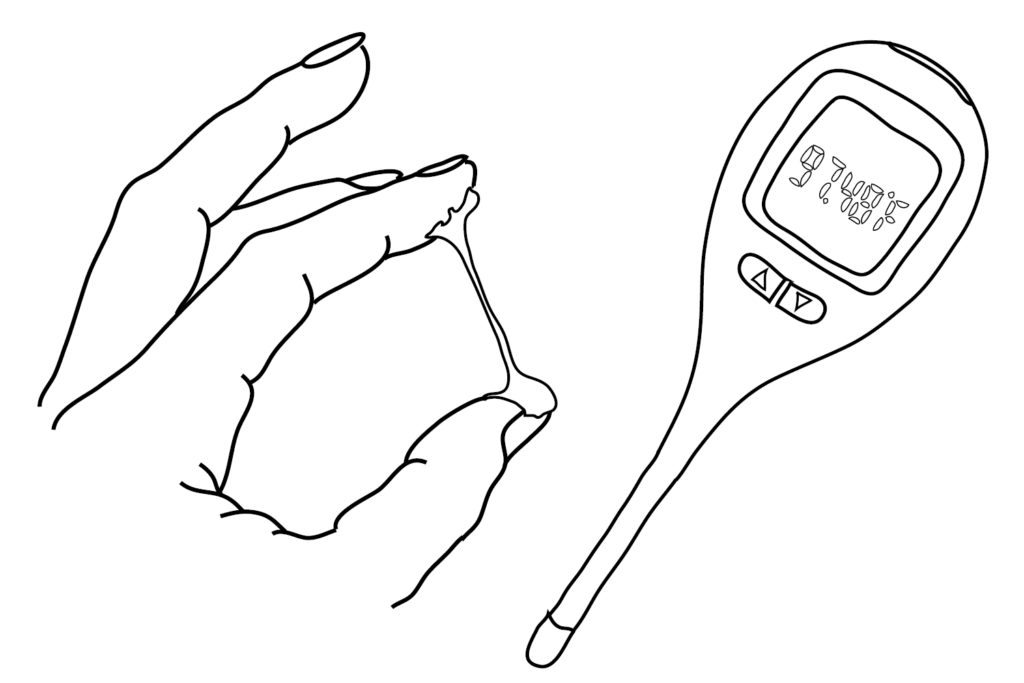
When I mention to friends, family and colleagues that I use the Symptothermal Method of Fertility Awareness as contraception (and have done so successfully for a number of years now), I typically get a blank stare, followed by a *lot* of questions!
These questions normally follow a pretty predictable pattern. However, I realised that for every person asking me these questions out loud, there were probably 5 other people out there wondering them internally, with no one to ask.
I decided to gather some of the most common questions I get when I share my experiences with the Symptothermal Method, and address them all in one place – here, on my blog.
Join the conversation!

Firstly – what IS the Symptothermal Method?
The Symptothermal Method is a form of Fertility Awareness. During each menstrual cycle, there is only a 6-9 day biological window during which pregnancy could result from unprotected sex. This time is known as the biological fertile window. The Symptothermal Method involves tracking cervical mucus and basal body temperature to identify this window (although the Symptothermal Method adds a buffer of at least several days on either side of the 6-9 day biological window).
With the Symptothermal Method, the presence of cervical mucus (in combination with some calculation rules) opens the fertile window, and a sustained rise in basal body temperature (combined with the drying-up of cervical mucus) closes the fertile window. Users follow a set of specific rules to check and confirm the opening and closing of the fertile window each menstrual cycle. This information can be used to avoid or gain pregnancy, and also offers valuable insight into your hormonal health.
How effective is it?
The Symptothermal Method is evidence-based and research shows it to be up to 99.6% effective with perfect use, and 98.2% effective with typical use. However, when understanding these effectiveness rates you should take into account that they are based on users who were taught a Symptothermal Double-Check Method under the guidance of qualified instructors. Double-Check Symptothermal Methods employ the use of calculations to double-check the opening of the fertile window (instead of relying on cervical mucus observations alone).
At present, we do not have any effectiveness studies on self-taught charters, so we don’t know how effective it is to learn to chart without an instructor. Additionally, the typical use rate of 98.2% may not be generalisable to the wider public because it comes from a clinical trial where participants were under close supervision. The topic of effectiveness rates is actually very complex – I encourage you to read the full story on effectiveness rates here.
The most important thing to remember is that it is proven possible to achieve up to 99.6% effectiveness with perfect use. Working with an instructor of a Symptothermal Double-Check Method will help you achieve this, as will strictly applying the rules. Users who engage in risky behaviour or sloppy adherence to the rules will quickly discover that the method is very unforgiving of imperfect use.

How long will it take me to learn?
This will depend on how you choose to learn the method. If you’re self-teaching it’s recommended to abstain from sex or use a barrier method for at least the first full three cycles as you learn. I was personally self-taught but was in a long-distance relationship at the time, so I wasn’t often testing out whether the method worked. In fact, it wasn’t until I had been charting my cycles with the Symptothermal Method for an entire year that I started to feel confident with the method and my knowledge of the rules.
You can bypass this stage completely by working with an instructor – you can confidently enjoy unprotected sex right from the first cycle if you’re working with an instructor who can check over your charts and confirm that you’re not currently fertile. In addition to this, the upper limits of method effectiveness are based on women who were learning the method under the guidance of an instructor – so it’s always in your best interest to try and mirror those conditions.
How much is it going to restrict me having unprotected sex?
Research shows that Symptothermal Method users with a hypothetical 28-day menstrual cycle would need to abstain from sex (or use a barrier method), for an average of 11 days each menstrual cycle. This would leave 17 days that could safely be used to have unprotected sex. Some of these days would likely fall on your period (meaning period sex). Keep in mind that period sex is not necessarily always safe for unprotected sex, you can read more about the risks of period sex here.
Navigating the transition from hormonal contraception to using the Symptothermal Method will look different for every couple. It may involve a reassessment of your sexual needs and wants, and it may take time to adjust to needing to abstain or use barrier methods during a significant portion of your menstrual cycle. Many couples find that the transition encourages a healthy intimacy where they learn and explore more about each other in the fertile window than they ever have before – it’s suprising what else is on the table when unprotected sex needs to be avoided! For other couples though, the transition is not a good fit with their sexual needs or lifestyle, and that’s ok too! At the end of the day, it is a big change and it can take some time to get used to.
It’s also worth noting that much of your decisions will depend on your reproductive intentions; that is, how seriously you are needing to avoid an unintended pregnancy and therefore what risks you’re comfortable with taking.
A qualified Symptothermal Method instructor has the tools to guide you through this transition in a way that simultaneously honours your reproductive intentions and the health of your relationship.

Can I still use the Symptothermal Method if I have irregular cycles?
Yes, you can absolutely use the Symptothermal Method if you have irregular cycles. The Symptothermal Method relies on daily cervical mucus and basal body temperature readings to pinpoint the opening and closing of your fertile window. Essentially, every day you ask yourself “Am I Fertile – TODAY?”, and your answer is based on your physical observations, which occur regardless of whether you have short, long or irregular cycles. The Symptothermal Method makes no assumptions about how your current cycle will unfold based on previous cycles*.

What if I have really long cycles?
As above, the Symptothermal Method can be used for long cycles as there is no prediction or guessing involved – it is simply a case of gauging your fertility status each day. However, if you have very long cycles you may sometimes face extended periods of barrier method use. This can be very frustrating for people who don’t enjoy using a barrier method of contraception! It may also lower the effectiveness of the method as you’ll be relying more often on contraceptive methods such as condoms and diaphragms. In saying this, charting your cycle using the Symptothermal Method will give you extremely valuable insight into your hormonal health. Many women find that charting allows them to identify and address the root causes behind their long cycles to start the journey towards better health. (And it’s amazing the progress you can make when the incentive of more unprotected sex is on the table!).

What if I don’t get as much cervical mucus as I see in all the pictures?
Everybody is different and will produce different quantities of cervical mucus. As long as you experience enough cervical mucus to be able to clearly see the transition in colour, texture and consistency as you move closer to ovulation, there’s no need to worry.
However, if your cervical mucus is exceptionally scant you may want to have your hormones tested, especially if you’re trying to conceive. Good quality cervical mucus plays a crucial role in allowing the transport of sperm through the reproductive tract. If you’re not seeing much cervical mucus then it may indicate a hormone imbalance, as cervical mucus is directly influenced by oestrogen levels.
Things that can impact the output of our reproductive hormones can include our age, bodyfat percentage, over-exercise, undereating, egg quality and much more. In saying this, the most important thing is to stay hydrated and ensure an abundant diet of healthy foods! In many cases, scant cervical mucus can be vastly improved simply by upping your water intake and adopting a healthy diet.
There are also some supplements and medications that can assist to increase cervical mucus output and a qualified Symptothermal Method instructor is able to advise on this topic.
PS: Be sure to check out the Cervical Mucus Gallery to browse real-life pictures of cervical mucus!

Is it easy to maintain in everyday life?
This is probably the most surprising answer – YES! After the initial investment of time and energy spent learning the Sympothermal Method (often around 3 months), it genuinely becomes second nature. You can’t un-learn this knowledge! It takes all of about 5 seconds to check your basal body temperature before you get out of bed in the morning. And checking your cervical mucus every time you use the bathroom becomes a very easy habit to maintain – I mean, you’re already sitting there so why not! If you want something bad enough and are willing to put in the initial investment of time and energy then the reward is well worth the effort.

Will it be a good fit with my lifestyle?
This really depends on the individual who is asking the question. If you have a disruptive or chaotic lifestyle you may struggle as it does require habit and dedication. If you have a partner who places their sexual satisfaction above your right to choose a contraceptive method that works for you, then you may struggle also. If you don’t get 3 consecutive hours of sleep around the same time every night (shift workers and nursing mamas, I’m looking at you!), you may also struggle. This is because basal body temperature is core resting temperature and requires at least 3 hours of consecutive sleep at the same time, every day. Luckily, there are ways around this, one of which is a device called a Tempdrop. The Tempdrop is a wearable thermometer that measures your basal body temperature at multiple times throughout the night and has an algorithm that smooths out any disturbances. The result? You have an accurate record of your BBT each day, without having to wake up at the same time every morning! To receive $10 OFF Tempdrop, click the link below and apply the code TDLOVE29 at checkout.
Heavy or frequent drinkers will also struggle as alcohol causes an artificial rise in basal body temperature. For those people that feel their basal body temperature will be too much of an issue, there are plenty of other Fertility Awareness-Based Methods other than the Symptothermal Method. These include Cervical Mucus-Only Methods (such as Billings), and Symptohormonal Methods (such as Marquette and Boston Cross Check). You can find out more about other methods and instructors on the Find An Instructor page.

Can I use a period tracker app to tell me when I’m fertile?
This is a surprisingly complex question, with a complex answer! Generally speaking, absolutely not. A period tracker app is generally just that – an app that will roughly track your period and predict the date of your next period based on your last period. There are thousands of cheap apps available that all provide some version of period tracking. These apps should never be used to predict when you are fertile – especially if you’re currently trying to avoid pregnancy. If you would like a detailed explanation of why not to trust app predictions, click here. However, the short version is this: there are many, many variables that can cause you to ovulate earlier or later than your average, and earlier or later than the general average. On top of this variation in when you ovulate, many women can have a shorter or longer luteal phase than average. The luteal phase is the approx. 14 days between ovulation and your next period. If you’re inputting the start and end dates of your period into an app, there’s a high chance that the app is simply subtracting approx. 14 days off the start date of your period, to tell you when you’re likely to ovulate. This is really risky if you’re seriously trying to avoid becoming pregnant!
The only time that you might consider using an app to tell you when you are fertile based on your period dates alone, is when that app has undergone rigorous and independent clinical trials to ascertain its true effectiveness rating – and even then only if you are comfortable with the effectiveness rating and the increased risk involved. The only such app I know of is Dot which has been found to be 99% effective with perfect use, and 95% effective with typical use (although I have seen a number of charts now where Dot incorrectly estimated the fertile window). Dot only requires you to input the start date of each period. You can read more about Dot here: https://www.dottheapp.com/dot-research. I personally would not feel comfortable taking on this risk but acknowledge that others might be ok with the increased risk. If you want to use these apps you must understand that if the app miscalculates your fertile time because you ovulate earlier or later than expected – you will be placed at a very high risk of unintended pregnancy.
Other types of apps use basal body temperature to predict when you are fertile. These apps include Natural Cycles and Daysy. They are prone to the exact same shortcomings due to the fact that basal body temperature alone does not provide any real-time information to warn as to when ovulation is approaching. I personally would never use these apps/devices and you can read why that is here.
Apps aren’t all bad though! You can safely use an app like Kindara or Read Your Body to record your cervical mucus and basal body temperature observations, but you need to be interpreting those observations yourself, not relying on app predictions.

*There are some calculation rules that are used in the Symptothermal Method (such as Minus 8/Doering Rules or S-Rules). Calculation Rules are what make Symptothermal Double-Check Methods so safe. While Calculation Rules are based on past cycles, they are used as safeguards and are always trumped by the presence of physical observations of cervical mucus and basal body temperature.
I hope this was helpful for you! If you have any additional questions please feel free to browse the many free resources on this website, or book in for a Virtual Consultation here.






Clear, informative and fun to read – awesome job!
You’re doing an amazing job with these blog posts, so much detail for people! Your site is an amazing resource.